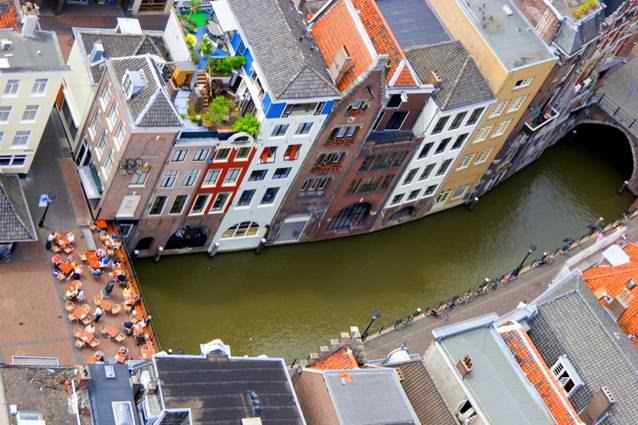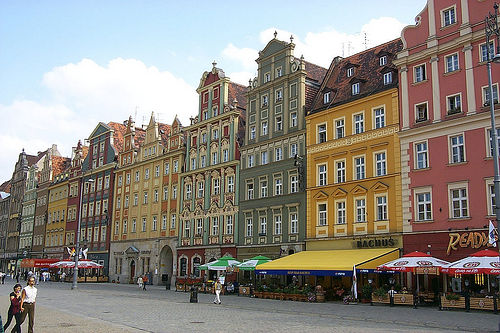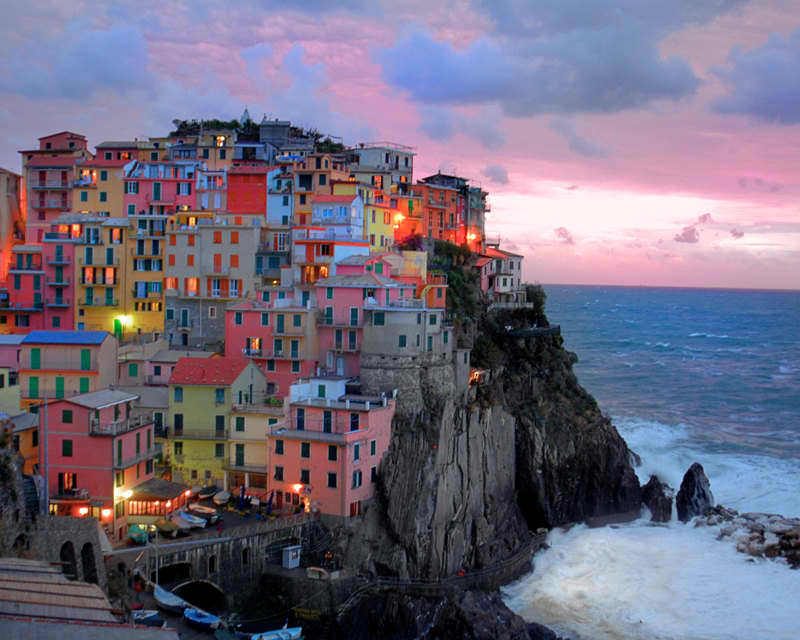10. Utrecht, Netherlands
Utrecht city is the capital and most populous city of the Dutch province of Utrecht. It is located in the eastern corner of the Randstad conurbanation, and is the fourth largest city of the Netherlands. Utrecht is the fourth largest city in the Netherlands and with no less than one sixth of the inhabitants being students, Utrecht is a real student city. In the historic centre you will find excellent museums in a setting of picturesque courtyards, restaurants and delightful little shops. There are two main theaters in the city, the Theater Kikker and the Stadsschouwburg Utrecht. The city also hosts the yearly Festival a/d Werf which offers a selection of contemporary international theater pieces, together with visual arts, public art and music.

9. Jaipur, India
Jaipur is the largest city in Rajasthan and was built in the eighteenth century by Sawai Jai Singh as India’s first planned city.In an effort to create a secure, flourishing city, Singh II studied architecture and consulted mathematicians and scientists during the planning. As the design followed the Indian architecture principles of Shilpa Shastra, which focus on the comfort and good fortune of the citizens, many modern-day architects still consider Jaipur one of the best planned cities in the world.

8. Stockholm, Sweden
Stockholm, as a city, is over 700 years old and spreads across 14 islands as it faces proudly out to the Baltic Sea. The city’s a very lively, cosmopolitan place with both modern Scandinavian architecture including lots of brass and steel, along with fairytale towers, a captivating Old Town (Gamla Stan) and lots of green space. The oldest building in Stockholm is the Riddarholmskyrkan from the late 13th century. After a fire in 1697 when the original medieval castle was destroyed, Stockholm Palace was erected in a baroque style. Storkyrkan Cathedral, the episcopal seat of the Bishop of Stockholm, stands next to the castle. It was founded in the 13th century but is clad in a baroque exterior dating to the 18th century.

7. Lima, Peru
Lima, located on the central western coast, is large, noisy, polluted and shrouded in a misty coastal fog for much of the year. Lima’s centre is a World Heritage Site and is home to an outstanding collection of 16th century religious institutions including the cathedral above, the Monastery of San Fransisco and the Sanctuary of Las Nazarenas. Festivities can be explored year-round in Lima. The Lord of the Miracles, the patron saint of Lima, is celebrated in October with a series of street parades that include a life-size replica of Jesus carried on an elaborate adorned altar.

6. Wroclaw, Poland
Wrocław is the capital city of Lower Silesian Voivodeship, a province created in 1999. It was previously the seat of Wrocław Voivodeship. The city is a separate urban gmina and city county. It is also the seat of Wrocław County, which adjoins but does not include the city. Wrocław has a number of historical and cultural sights and attractions. Market Square is the city center with many restaurants and shops located by picturesque buildings. Cathedral Island is the oldest part of Wrocław and is the location of St. John the Baptist Cathedral and the Holy Cross Church. The city has 200 bridges and is known as the Venice of Central Europe.

5. Manarola, Italy
Manarola, Italy is one of five tiny towns in a section of the Italian Riviera known as Cinque Terre. Although Cinque Terre translates to “five lands,” it actually refers to five villages that are all connected by a walking path: Monterosso al Mare, Vernazza, Corniglia, Manarola, and Riomaggiore. Manarola is perched on a steep, black promontory. It’s bordered on three sides by a terraced hillside and sits facing the sea. Founded in the 12th century, Manarola is a typical Genovese hamlet. Its multi-colored tower houses are accessible from more than one level. The narrow streets called carruggi are more step than road.

4. St. John’s, Newfoundland, Canada
St. John’s is one of the oldest European settlements in North America and is the capital city of Newfoundland and Labrador. Its name is derived from the feast day of St. John the Baptist, because it was on that day in 1497 that Giovanni Caboto, or John Cabot, sighted the New-Founde-Lande. The architecture of St. John’s has a distinct style from that of the rest of Canada, and its major buildings are remnants of its history as one of the first British colonial capitals. Buildings took a variety of styles according to the means available to build the structures.

3. Valparaiso, Chile
The city is the capital of the Valparaíso Province and the Valparaíso Region. Although Santiago is Chile’s official capital, the National Congress of Chile was established in Valparaíso in 1990. The city is also home to a Naval Museum that documents Chile’s history and today is a port of call for cruise ships. The most interesting part of Valparaiso is the old section, where you will find colonial buildings, churches, and museums, a great place to stay in this area is the Hotel Manoir Atkinson, itself a restored patrimonial home.

2. Willemstad, Netherlands Antilles
Willemstad, capital and chief town of Curaçao, located on the southern coast of the island of Curaçao in the Caribbean Sea. It is divided into two parts by Sint Anna Bay, leading to Schottegat Harbour.The city center of Willemstad boasts an array of colonial architecture that is influenced by Dutch styles. The city center, with its peculiar architecture and beautiful harbour entry, has been made a UNESCO world heritage site.

1. Guanajuato City, Mexico
Guanajuato is a city and municipality in central Mexico and the capital of the state of the same name. It is located in a narrow valley, which makes the streets of the city narrow and winding. Most are alleys that cars cannot pass through, and some are long sets of stairs up the mountainsides. Guanajuato is host each year to the International Cervantino Festival, named in honor of Miguel de Cervantes, author of Don Quixote.Artists from around the world perform in recitals, concerts, plays, ballet, modern dance, opera and art exhibits.Because Guanajuato is very rich in legends, when you visit it, you will hear stories such as that of Jose Carpio, a very humble person who, after living many tragedies, became a very rich man, or the story of El Truco, a man who lost his wife to the devil on a bet.
